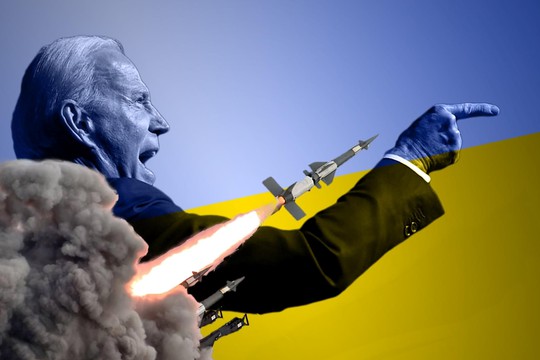The Biden administration joined with the leaders of Germany, Nordic countries and the Baltic states on Thursday by lifting formal restrictions on the use of NATO long-range strike systems sent to Ukraine to target areas deep inside Russia.
US officials told the New York Times on Thursday that the White House shifted its position on Kiev’s use of Western-sourced strike systems to attack the Russian hinterland in connection with setbacks on the Kharkov front, and indicated that the first attacks using American-made weapons could begin “within hours or days.”
Ukraine has amassed an array of NATO equipment with which to attempt its long-range strikes, including the British-French Storm Shadow/SCALP cruise missile system, which has a range of between 250 and 560 km, and the US Army Tactical Missile System (ATACMS), ranged at 160-300 km and fired using HIMARS and MLRS precision rocket artillery installations.
“The Russian offensive near Kharkov has been used as a reason to change Western policy,” Mikael Valtersson, a former Swedish Armed Forces officer and military observer specializing in air defense, told Sputnik.
“The reasoning in Western circles was that Ukraine must be able to answer if attacks come from the Russian side of the 1991 border. From a military point of view this might be understandable, but it is still another huge step towards escalation from the West toward Russia,” the observer said.
Valtersson expects the military consequences of NATO’s green light for Kiev to be “minor,” since Ukraine’s military has a limited number of long-range strike systems.
Then there’s the experience Russian Air Defense Forces have amassed over the past two years in fine-tuning their equipment specifically to target projectiles like the ATACMS and Storm Shadow.
Still, the threat posed by the long-range missiles is not insignificant, particularly given Kiev’s willingness to use them in the past to target civilian areas in the Donbass and the Russian city of Belgorod.
The “big question,” according to Valtersson, is “how involved the Western powers will be in targeting and other preparations for the attacks.”
“Already much of Ukrainian battlefield surveillance and communications is dependent on Western help. This help is probably as important as the military deliveries or economic support from the West,” the observer pointed out, saying he expects this assistance to become “even more important” with the restrictions lifted.
“Both the lifting of restrictions and increased Western help to attack targets within [Russia] will be an escalation from the West. An important question is what the Russian response will be. In my opinion, the Western countries could be seen as participants in the conflict and therefore legitimate targets for Russian military responses,” Valtersson warned.
“But since Russia wants to avoid a large-scale direct military conflict with the West, military attacks toward military installations within NATO countries are very unlikely. Instead, Russia might hunt even more avidly for Western targets within Ukraine, increase electronic warfare against NATO assets, even within NATO countries and in space, and finally increase efforts to undermine Western interests in the Global South,” the observer believes.”
In the final analysis, Valtersson calls the US and NATO decision “a very unfortunate step in a direction that might end up in a direct global conflict between Russia and the West,” and one that will “strengthen the animosity among the Russian population against the West, and be seen as a clear signal of Western hostility towards Russia.”
read more in our Telegram-channel https://t.me/The_International_Affairs

 10:14 04.06.2024 •
10:14 04.06.2024 •























